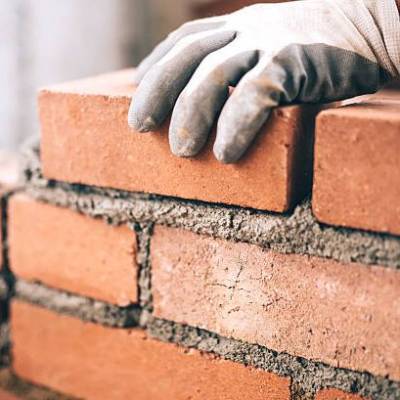- Home
- Real Estate
- ´Infrastructure status´ to spur investments into affordable housing

´Infrastructure status´ to spur investments into affordable housing
As Rohit Poddar, Managing Director, Poddar Housing and Development, sees it, ´Now, the positioning of the industry becomes a lot better.´ He adds, ´Funding will become mainstream to this sector - easier construction loans, the option of raising ECBs, structured debt instruments and other financial instruments that will make finance cheaper and much more easily available.´
Real estate being a highly capital intensive industry, regional developers in the periphery of the metros of SME developers operating in Tier-II and Tier-III cities, have traditionally faced shortage of capital including debt at reasonable prices. But now, as Poddar reveals, ´Various types of capital - equity, debt, structured debt and other financial instruments - will become more easily accessible to these developers, which in turn will allow the creation of supply.´
What could one expect in terms of investment flow? According to Poddar, ´Investments will in-principle certainly flow into the affordable housing sector based on merit.´ However, he adds that there are several other steps taken by the Central Government to spur supply such as the PMAY scheme, interest subsidy of 3 per cent and 4 per cent for home loans up to Rs 12 lakh and Rs 9 lakh, respectively, and an extension in the tax holiday for affordable housing projects.
The above in combination will certainly spur the creation of supply and investments into the sector. Now, that sounds affordable!
- SHRIYAL SETHUMADHAVAN
Recycled waste to be used as fuel at cement plants: CPCB draft guidelines
The Central Pollution Control Board (CPCB) has issued draft guidelines, which mentions that hazardous, municipal and agricultural waste should be recycled and used as fuel in cement plants.
The draft ´Guidelines for Pre-processing and Co-processing of Hazardous and Other Wastes in Cement Plants´ as per Hazardous and Other Waste (Management and Transboundary movement Rules) 2016 were opened to public last month for comments.
Aimed at ensuring that the waste is recycled in order to help tackle pollution, the proposed guidelines are in line with the recently notified hazardous waste rules 2016. As Ulhas Parlikar, Director, Geocycle, says, ´The earlier rules were different; in fact, co-processing was not a part of the rules at all. It was only recognised as ´use of hazardous waste´ under rule 11.´ He adds that it is after eight years of experience of co-processing in the country, the rules have been modified:
It suggests that all materials, which are suitable for co-processing should be permitted for co-processing without any trial.´ While earlier conditions included the need for a trial, CPCB´s experience derived from about 90 odd trials conducted, concluded that these don´t add much value. Additionally, Parlikar says positively, CPCB has introduced these guidelines to facilitate state government authorities; basically, for the State Pollution Control Boards (SPCBs) to understand and interpret the rules accurately and grant necessary authorisation or undertake co-processing in a proper manner.´
This move would also benefit cement companies. As Parlikar shares, ´First, companies will be able to dispose waste, which is not recyclable. Also, importantly, since waste will be processed and used, utilisation of natural resources - be it raw material or fuel- will reduce. That said, cement players may also reduce mining activities, and to a large extent, production cost, because using waste will be less expensive as a natural material.´ That said, this will also result in considerable reduction of carbon footprint.
- SHRIYAL SETHUMADHAVAN
States collect Rs.31,694- crore construction cess: 80 per cent unspent
In India, 100 per cent implementation of any government-led programme is a rare site. Testimony to this is the utilisation of construction cess. Consider this: As on date, states and UTs have collected Rs 31,694 crore cess at the rate of 1 per cent of the construction cost, but have spent just about Rs 6,866 crore for the welfare of construction workers.
As per records, Maharashtra has collected the highest amount of construction cess - Rs 3,799 crore - with a mere utilisation of Rs 217 crore, registering 4.61 lakh of labourers. As per 2011-14 data, while the state has collected Rs 2,655 crore, it has spent Rs 163.98 crore. However, from 2014, the Phadnavis-led government has managed to collect Rs 1,144 crore with an expenditure of about Rs 54 crore.
Speaking exclusively to CW, Sambhaji Patil-Nilangekar, Minister for Labour, Government of Maharashtra, agrees that funds have been under-utilised by the state. Identifying the reason for the same, he lists, ´Lack of registration of labourers, awareness and unability to track construction activities on a real-time basis.´ He also reveals that the actual collection needs to be to the tune of Rs 8,000 crore, to achieve which, the government will deploy satellite mapping of construction activities since 2009. In the first phase, the state will directly credit Rs 5,000 to their (labourers) Jan Dhan accounts and provide financial assistance of Rs 3.75 lakh under Pradhan Mantri Awas Yojna. Additionally, all the registered labourers will be insured with an accident policy to be directly credited in the Central Government´s scheme.
That said, if this is the state of affairs of the highest contributor, one could wonder how the other states have been faring! Karnataka and Haryana, for instance, with a collection of Rs 3,388 crore and Rs 1,546 core are the worst performers after Maharashtra, having utilised Rs 205 crore and Rs 115 crore, respectively. Delhi and Madhya Pradesh have done well! Having collected Rs 1,536 crore and Rs 1,575 crore, the states have spent Rs 174 crore and Rs 552 crore, respectively.
However, of the 28 states, Kerala has performed, and how! Of the overall collected amount of Rs 1,265.29 crore, the state has spent over Rs 1,195 crore. The big breach between construction cess collected and the spend indicates an urgent need for amendments of the Building and Other Construction Workers Act, 1996. This will ease out the process of registration of workers and better utilisation of funds for states.
- RAHUL KAMAT
To share your perspective on current industry happenings, write in at feedback@ConstructionWorld.in
The year 2017 seems like the year for the affordable housing segment, and there should be no looking back for developers and the government hereon. The ´infrastructure status´ will certainly open up new financial avenues for developers. While an increase in the allocation to Rs 23,000 crore under the Pradhan Mantri Awas Yojana (PMAY) was announced in the Budget this year, the ´infrastructure status´ move will only spur more growth. As Rohit Poddar, Managing Director, Poddar Housing and Development, sees it, ´Now, the positioning of the industry becomes a lot better.´ He adds, ´Funding will become mainstream to this sector - easier construction loans, the option of raising ECBs, structured debt instruments and other financial instruments that will make finance cheaper and much more easily available.´ Real estate being a highly capital intensive industry, regional developers in the periphery of the metros of SME developers operating in Tier-II and Tier-III cities, have traditionally faced shortage of capital including debt at reasonable prices. But now, as Poddar reveals, ´Various types of capital - equity, debt, structured debt and other financial instruments - will become more easily accessible to these developers, which in turn will allow the creation of supply.´ What could one expect in terms of investment flow? According to Poddar, ´Investments will in-principle certainly flow into the affordable housing sector based on merit.´ However, he adds that there are several other steps taken by the Central Government to spur supply such as the PMAY scheme, interest subsidy of 3 per cent and 4 per cent for home loans up to Rs 12 lakh and Rs 9 lakh, respectively, and an extension in the tax holiday for affordable housing projects. The above in combination will certainly spur the creation of supply and investments into the sector. Now, that sounds affordable! - SHRIYAL SETHUMADHAVAN Recycled waste to be used as fuel at cement plants: CPCB draft guidelines The Central Pollution Control Board (CPCB) has issued draft guidelines, which mentions that hazardous, municipal and agricultural waste should be recycled and used as fuel in cement plants. The draft ´Guidelines for Pre-processing and Co-processing of Hazardous and Other Wastes in Cement Plants´ as per Hazardous and Other Waste (Management and Transboundary movement Rules) 2016 were opened to public last month for comments. Aimed at ensuring that the waste is recycled in order to help tackle pollution, the proposed guidelines are in line with the recently notified hazardous waste rules 2016. As Ulhas Parlikar, Director, Geocycle, says, ´The earlier rules were different; in fact, co-processing was not a part of the rules at all. It was only recognised as ´use of hazardous waste´ under rule 11.´ He adds that it is after eight years of experience of co-processing in the country, the rules have been modified: It suggests that all materials, which are suitable for co-processing should be permitted for co-processing without any trial.´ While earlier conditions included the need for a trial, CPCB´s experience derived from about 90 odd trials conducted, concluded that these don´t add much value. Additionally, Parlikar says positively, CPCB has introduced these guidelines to facilitate state government authorities; basically, for the State Pollution Control Boards (SPCBs) to understand and interpret the rules accurately and grant necessary authorisation or undertake co-processing in a proper manner.´ This move would also benefit cement companies. As Parlikar shares, ´First, companies will be able to dispose waste, which is not recyclable. Also, importantly, since waste will be processed and used, utilisation of natural resources - be it raw material or fuel- will reduce. That said, cement players may also reduce mining activities, and to a large extent, production cost, because using waste will be less expensive as a natural material.´ That said, this will also result in considerable reduction of carbon footprint. - SHRIYAL SETHUMADHAVAN States collect Rs.31,694- crore construction cess: 80 per cent unspent In India, 100 per cent implementation of any government-led programme is a rare site. Testimony to this is the utilisation of construction cess. Consider this: As on date, states and UTs have collected Rs 31,694 crore cess at the rate of 1 per cent of the construction cost, but have spent just about Rs 6,866 crore for the welfare of construction workers. As per records, Maharashtra has collected the highest amount of construction cess - Rs 3,799 crore - with a mere utilisation of Rs 217 crore, registering 4.61 lakh of labourers. As per 2011-14 data, while the state has collected Rs 2,655 crore, it has spent Rs 163.98 crore. However, from 2014, the Phadnavis-led government has managed to collect Rs 1,144 crore with an expenditure of about Rs 54 crore. Speaking exclusively to CW, Sambhaji Patil-Nilangekar, Minister for Labour, Government of Maharashtra, agrees that funds have been under-utilised by the state. Identifying the reason for the same, he lists, ´Lack of registration of labourers, awareness and unability to track construction activities on a real-time basis.´ He also reveals that the actual collection needs to be to the tune of Rs 8,000 crore, to achieve which, the government will deploy satellite mapping of construction activities since 2009. In the first phase, the state will directly credit Rs 5,000 to their (labourers) Jan Dhan accounts and provide financial assistance of Rs 3.75 lakh under Pradhan Mantri Awas Yojna. Additionally, all the registered labourers will be insured with an accident policy to be directly credited in the Central Government´s scheme. That said, if this is the state of affairs of the highest contributor, one could wonder how the other states have been faring! Karnataka and Haryana, for instance, with a collection of Rs 3,388 crore and Rs 1,546 core are the worst performers after Maharashtra, having utilised Rs 205 crore and Rs 115 crore, respectively. Delhi and Madhya Pradesh have done well! Having collected Rs 1,536 crore and Rs 1,575 crore, the states have spent Rs 174 crore and Rs 552 crore, respectively. However, of the 28 states, Kerala has performed, and how! Of the overall collected amount of Rs 1,265.29 crore, the state has spent over Rs 1,195 crore. The big breach between construction cess collected and the spend indicates an urgent need for amendments of the Building and Other Construction Workers Act, 1996. This will ease out the process of registration of workers and better utilisation of funds for states. - RAHUL KAMAT To share your perspective on current industry happenings, write in at feedback@ConstructionWorld.in






















